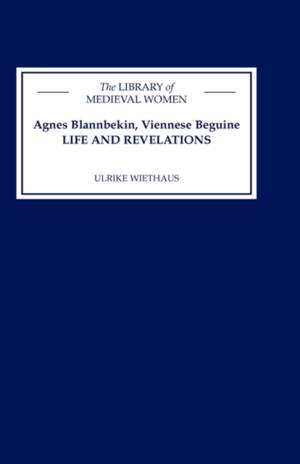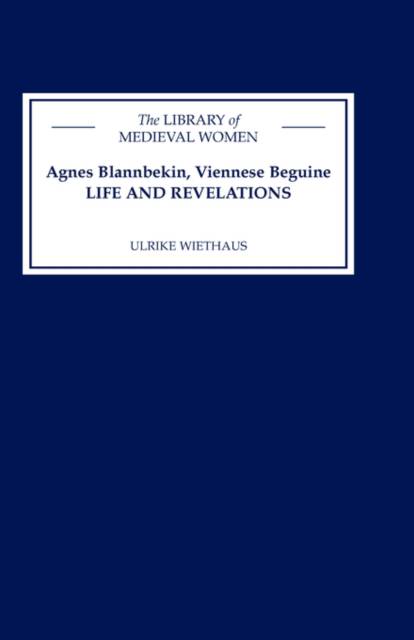
Je cadeautjes zeker op tijd in huis hebben voor de feestdagen? Kom langs in onze winkels en vind het perfecte geschenk!
- Afhalen na 1 uur in een winkel met voorraad
- Gratis thuislevering in België vanaf € 30
- Ruim aanbod met 7 miljoen producten
Je cadeautjes zeker op tijd in huis hebben voor de feestdagen? Kom langs in onze winkels en vind het perfecte geschenk!
- Afhalen na 1 uur in een winkel met voorraad
- Gratis thuislevering in België vanaf € 30
- Ruim aanbod met 7 miljoen producten
Zoeken
Agnes Blannbekin, Viennese Beguine: Life and Revelations
Ulrike Wiethaus
€ 153,45
+ 306 punten
Uitvoering
Omschrijving
The 'Life and Revelations' of Agnes Blannbekin (d.1315) is the first known example of a spiritual diary with a focus on the context of a female mystic's visions. Unlike other women's visionary writings from the period, it offers an unusually frank and detailed glimpse of religious women's daily life and spiritual practices. Agnes Blannbekin is a Beguine and the daughter of an Austrian farming family; together with her anonymous Franciscan confessor and scribe, she describes and reflects upon what may be called 'street mysticism': a spirituality lived in urban spaces, dependent upon the liturgical cycles of the church year, but deftly interwoven with the opportunities and vagaries of city life. Blannbekin's visions comment on memorable events such as a popular bishop's visit to town during which people were trampled to death; the consequences of a rape committed by a priest; thefts of the Eucharist and the work of witches. Unlike the writings of courtly mysticism, Blannbekin's street mysticism interprets Christ not only as a bridegroom, but also as a shopkeeper, apothecary, and axe-wielding soldier. Her vision of swallowing Christ's foreskin led to the eventual censorship of her works; equally provocative, however, is a vision of her own faith dancing around the altar in the form of a young and proud woman. 'Life and Revelations' has only recently been rediscovered and edited by Austrian scholar Peter Dinzelbacher. This translation is based on Dinzelbacher's critical edition.
Specificaties
Betrokkenen
- Auteur(s):
- Uitgeverij:
Inhoud
- Aantal bladzijden:
- 192
- Taal:
- Engels
- Reeks:
Eigenschappen
- Productcode (EAN):
- 9780859916349
- Verschijningsdatum:
- 21/03/2002
- Uitvoering:
- Hardcover
- Formaat:
- Genaaid
- Afmetingen:
- 148 mm x 226 mm
- Gewicht:
- 349 g

Alleen bij Standaard Boekhandel
+ 306 punten op je klantenkaart van Standaard Boekhandel
Beoordelingen
We publiceren alleen reviews die voldoen aan de voorwaarden voor reviews. Bekijk onze voorwaarden voor reviews.









